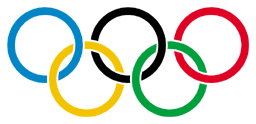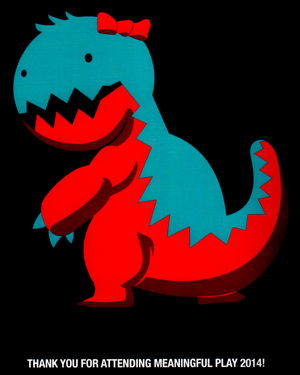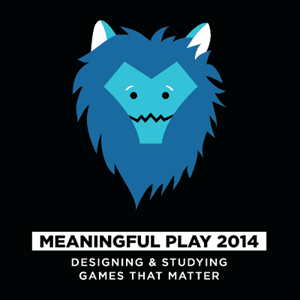Our social media service provided some interesting data.

The XXII Winter Olympic Games (a.k.a., Sochi 2014) took place in Sochi, Russia on February 6-23, 2014. Digital Gamecraft started covering the event via a special @DGOlympics Twitter account, and a new DGOlympics Facebook page, January 24.
Prior to the actual competition, we reported all manner of information about the upcoming events, schedules, venues, and athletes, and once events got started, we reported news and results for all 98 athletic events, in 15 disciplines within 7 primary sports. We provided a totally free real-time service, on two platforms, with no advertising.
Twitter Service
On Twitter, we posted (necessarily) short factoids and results, including podium finishers for every single event, as well as qualifiers and/or standings (as appropriate) from earlier segments of the competition. At the start of each competitive day, we posted a list of the medal events that day and highlighted other interesting events. At the conclusion of competition each day, we posted medal rankings and counts for the top countries.
The format of the result posts was a sport/discipline tag (e.g., #bobsleigh) followed by the event within that discipline, including ‘Men’ or ‘Women’ as appropriate, and then the actual results or interesting facts. We originally began using #men and #women hashtags, but clicking on either brought up a whole lot of irrelevant and inappropriate garbage, so we dropped that practice quickly. We made a point of always mentioning the results for American athletes, usually tagged with #TeamUSA.
Shortly after we started posting results, we began to also send out congratulatory tweets to those athletes who earned medals and also had a Twitter account.
By the end of Sochi 2014, we had made almost 1500 tweets (since London 2012).
Facebook service
On Facebook, we posted essentially the same information as Twitter, but without the size constraints, we often included information from several related tweets in a single Facebook update. For example, all of the upcoming events and highlights for a day were included in one update. Also, some updates (including medal ranks/counts) provided a little more information (e.g., top 10 instead of top 5) than the similar tweets.
The format of the result posts was similar to Twitter as well, except that sport/discipline tags were included at the end of each post, rather than within a sentence, where the name was spelled out normally. Results for a single event (or segment thereof) were often combined into a single update, but results from different events were always separate.
We posted hundreds of updates by the end of Sochi 2014.
Results
Beginning with just a few (<10) Twitter followers left over from London 2012, we simply worked on providing a quality service, without external marketing. Throughout the course of the Winter Games, our following grew gradually and organically to nearly 40 (paltry). The Facebook page was brand new, and with a single request to all of my friends, the number of ‘likes’ jumped to just short of 30 overnight, but it took the duration for it to grow to almost exactly the same number as Twitter followers.
As Sochi 2014 got started, our Facebook page passed 30 ‘likes’, which is a significant milestone, because at that level one gains access to Insights, which provides information about how many people see each post, the number of people “engaged”, and the total “reach” of your page. This is where things started getting interesting.
Despite the measly ‘like’ (and ‘followers’) counts, posts were clearly being seen and read far more widely. Our total engagement numbers were higher than the total number of ‘likes’ on the page, and our reach was in the thousands each week. Individual posts varied widely, but some got hundreds of views each (without being ostensibly shared), far beyond expectations with fewer than 40 ‘likes’. On the Twitter side, with no similar analytics, we could still see similar behaviors, when results were often retweeted within minutes of posting, and almost always by somebody who did not follow us.
Though our hopes were to gain more Twitter followers, our tweets congratulating athletes did get some responses, in the form of favorites and retweets, as well as at least one non-athlete Twit who wanted to argue the validity of an official result. Here is our shout out to the athletes who took the time to acknowledge our tweets:
- Arianna Fontana (ITA) – Short Track [1 silver, 2 bronze]
- Eliza Tiruma (LAT), Luge [bronze]
- Katie Uhlaender (USA), Skeleton [4th place]
- Denis Ten (KAZ), Figure Skating [bronze]
- Denny Morrison (CAN), Speed Skating [1 silver, 1 bronze]
- Patrizia Kummer (SUI), Snowboard [gold]
- Lukas Hofer (ITA), Biathlon [bronze]
- Anke Karstens (GER), Snowboard [silver]
- Niklas Edin (SWE), Curling [bronze]
The sheer number of hours (more than 200) spent compiling information, monitoring the events, and reporting results was astounding, and completely exhausting. When the Closing Ceremony began, we were more than ready to post the final tallies and be done with the Olympics for 2 more years (at least 🙂 ).
Conclusions
First, the number of ‘likes’ on Facebook and the number of followers on Twitter do not tell the entire story. We were clearly reaching many times that number of people.
Second, providing a purely informational resource, free of charge, is not enough to fully engage an audience. We probably needed more cats and misspelled “meme” images.
Third, a comprehensive information resource like the one we provided seems to lose interest over time. Whether it was Olympic weariness or something more general, our “reach” numbers peaked after about a week and a half, and then slowly declined (although they remained in the low thousands).
Fourth, a concentrated social media resource requires a major commitment of time which, in this instance, is in no way justified by the results. I, personally, am not sure that I am willing to commit to this again for Rio 2016.
Fifth, even after providing loads of information for weeks, people on social media are apparently still jaded against marketing messages. Our penultimate Facebook update, which ended with “Please note that DGOlympics has been brought to you by Digital Gamecraft, developer of Demolish! Pairs, http://demolishpairs.com/“, got the fewest views of any post during the entirety of this experiment, by a factor of 2.
Comments
Please share your tricks (and failures) about dealing with social media in the comments.



 Meaningful Play 2014
Meaningful Play 2014



